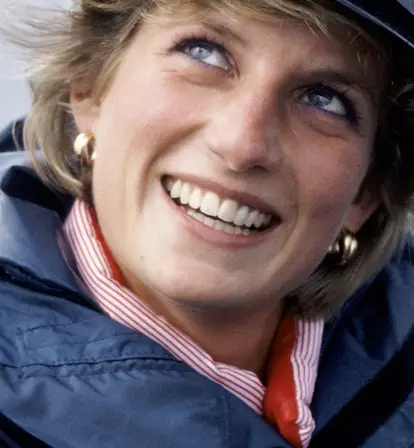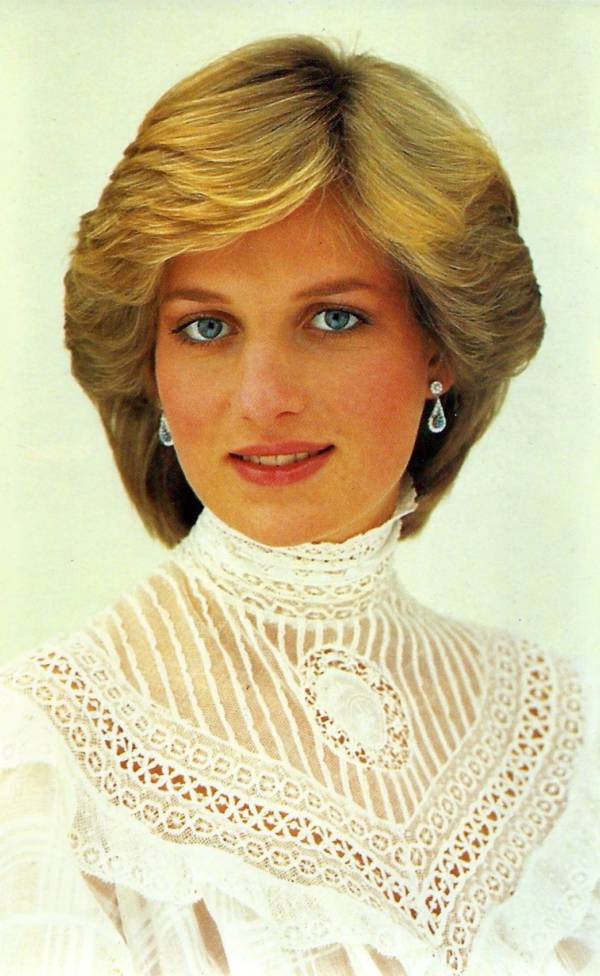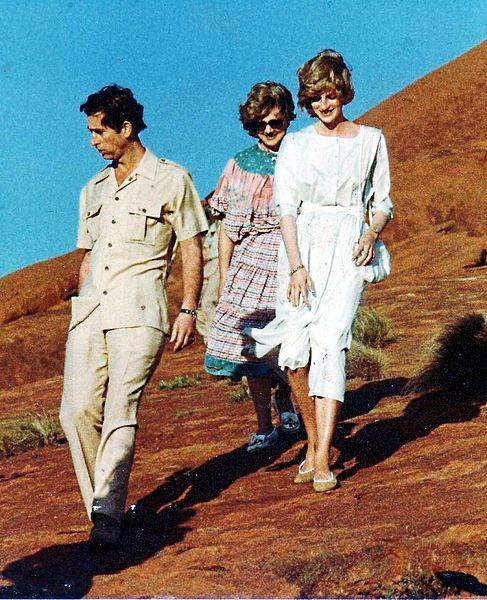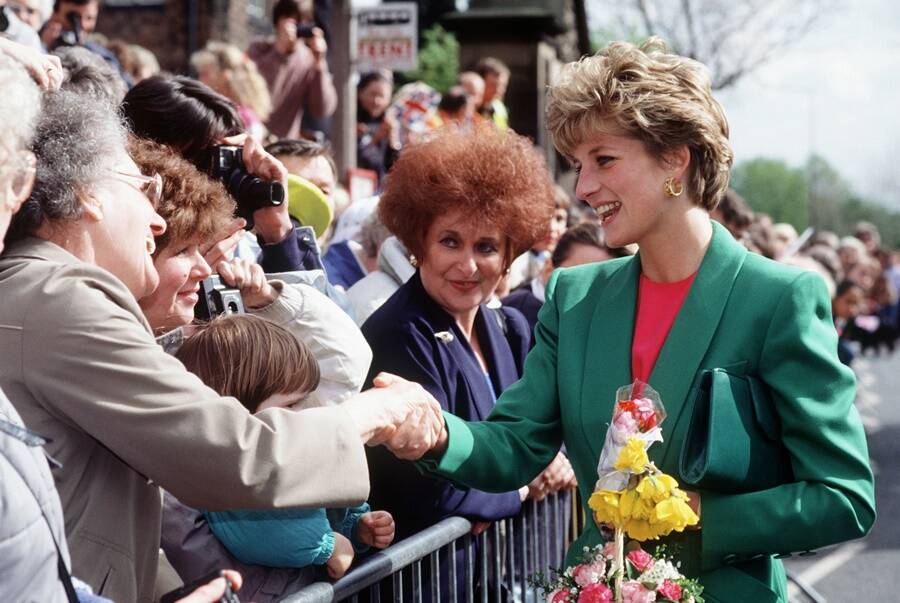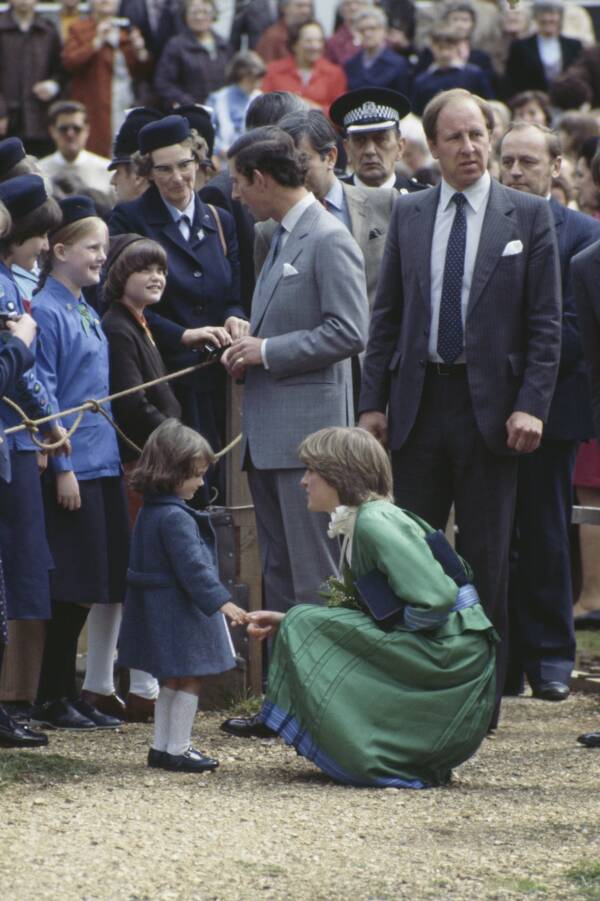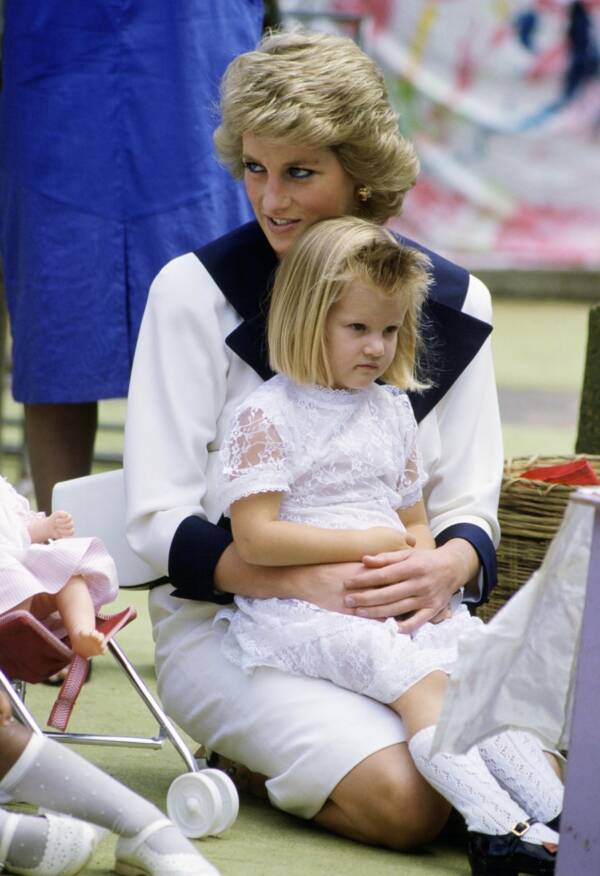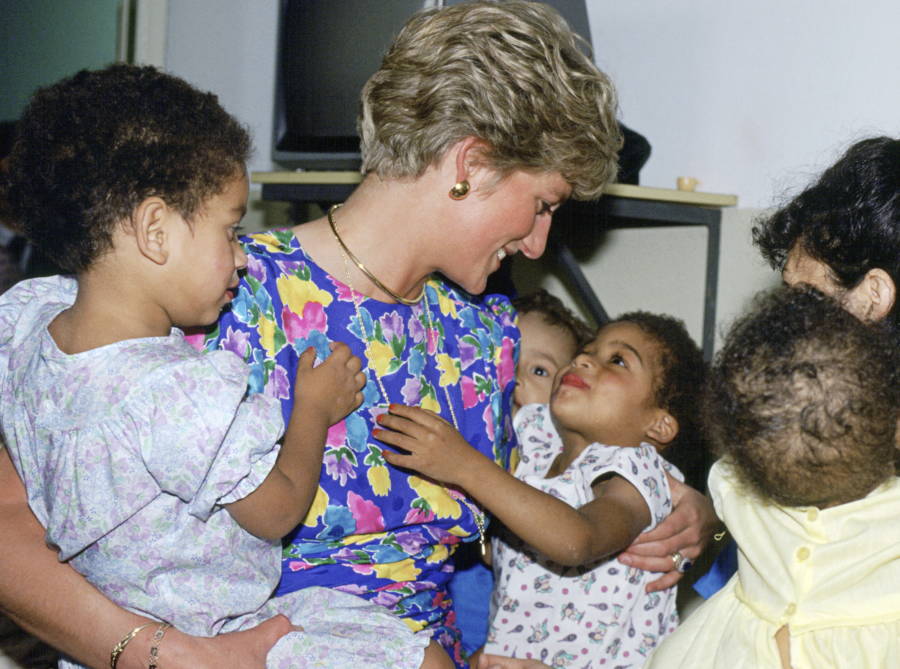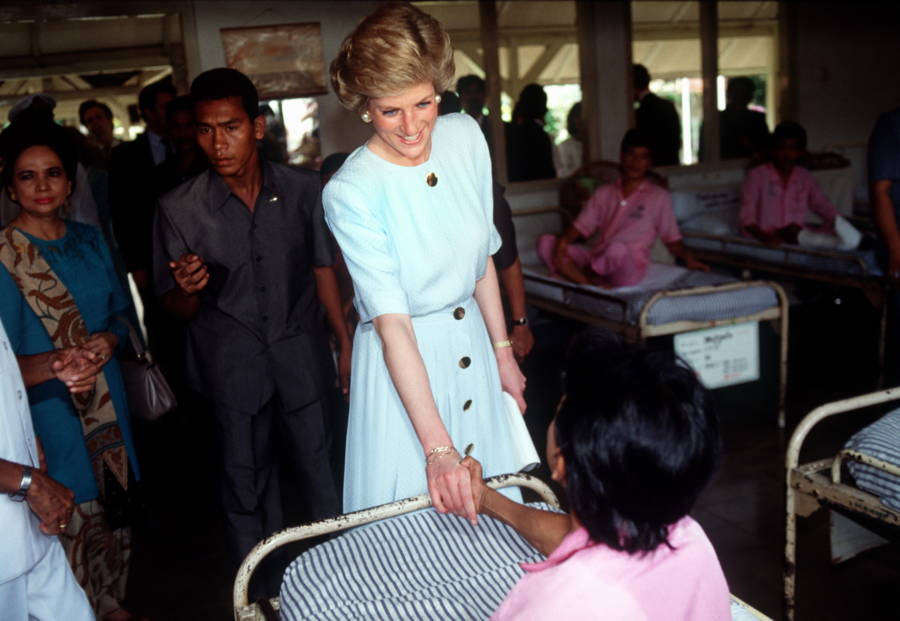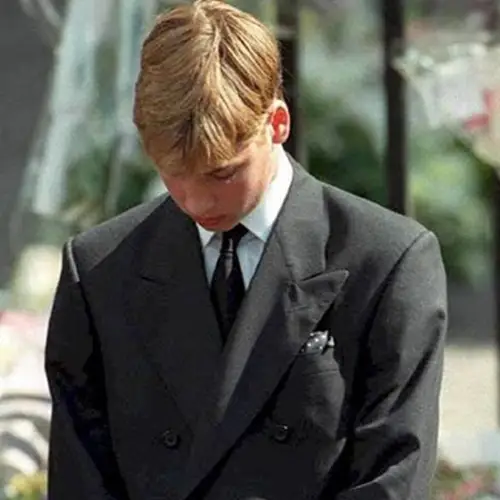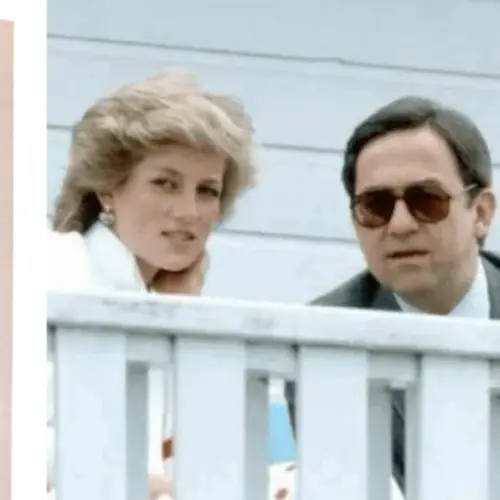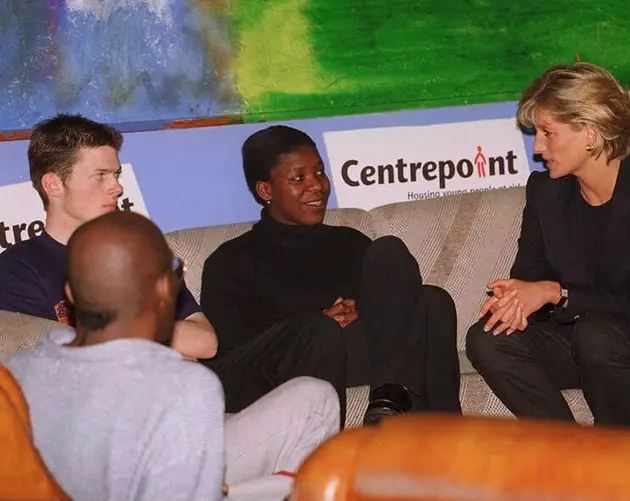These pictures of Princess Diana at the palace, at the water park, and in the field show why she was hailed as "the People's Princess."
When she married Prince Charles, the heir apparent to the British throne, in 1981, Lady Diana Spencer's life changed forever.
Princess Diana became the darling of the people with her down-to-earth attitude and her effusive compassion for others. She was lauded for her humanitarian work, which brought necessary international attention to the issues of poverty, homelessness, HIV/AIDS, leprosy, and refugee crises.
Tragically, her reign of empathy ended in a fatal car crash in Paris in August 1997. But her legacy is far from forgotten. The pictures of Princess Diana in the gallery above illustrate the beloved royal's incredible life story.
How Diana Spencer Became A Princess
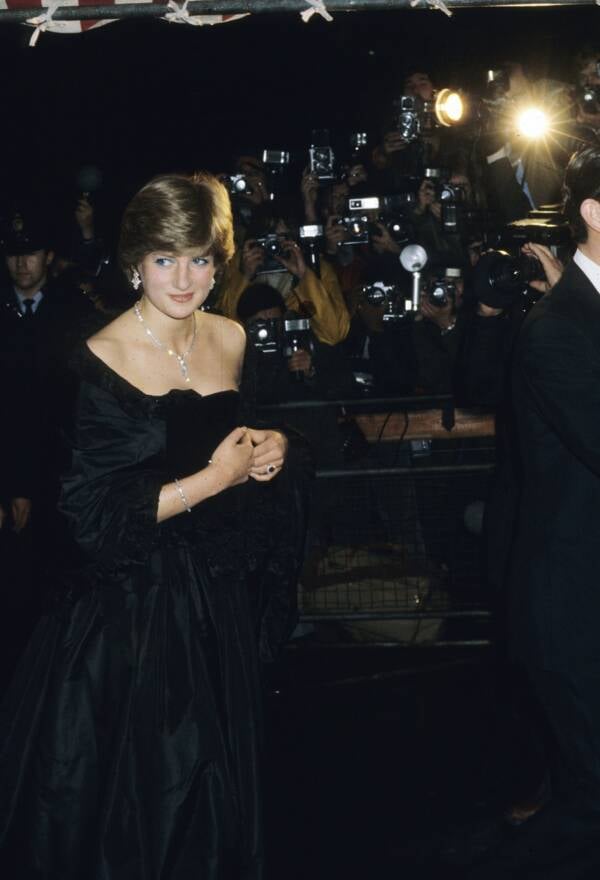
Anwar Hussein/WireImageAfter she became the Princess of Wales, Diana Spencer quickly turned into Britain's latest media darling. Sadly, her new status also led to the paparazzi becoming obsessed with taking pictures of Princess Diana.
Diana Frances Spencer was not born a royal, but she was born into a life of nobility. A member of the aristocratic Spencer family, she was born on July 1, 1961, in Norfolk, England. As a girl, she was described as shy yet creative. Despite her prestigious background, she was always a hard worker.
Growing up, Diana Spencer attended finishing school in Switzerland before moving to London, where she took a series of low-paying jobs as a hostess, nanny, and cleaner until she found work as a kindergarten teacher.
Her love for children — which would later be significantly reflected in her charity work — made teaching rewarding for her and she continued to work as a teacher until she became engaged to Charles, Prince of Wales, in 1981.
She had already received the title Lady Diana Spencer when her father inherited his Earldom in 1975. But after she married Prince Charles — the eldest child of Queen Elizabeth II — she became Diana, Princess of Wales.
Her profile inevitably rose as Britain's newest princess. But her relatively modest background (in comparison to the other royals) made her a seemingly grounded figure. Sadly, the made-to-be princess was never truly able to escape the prying eyes of the public — or the ruthless press.
Princess Diana's Controversies With The Crown
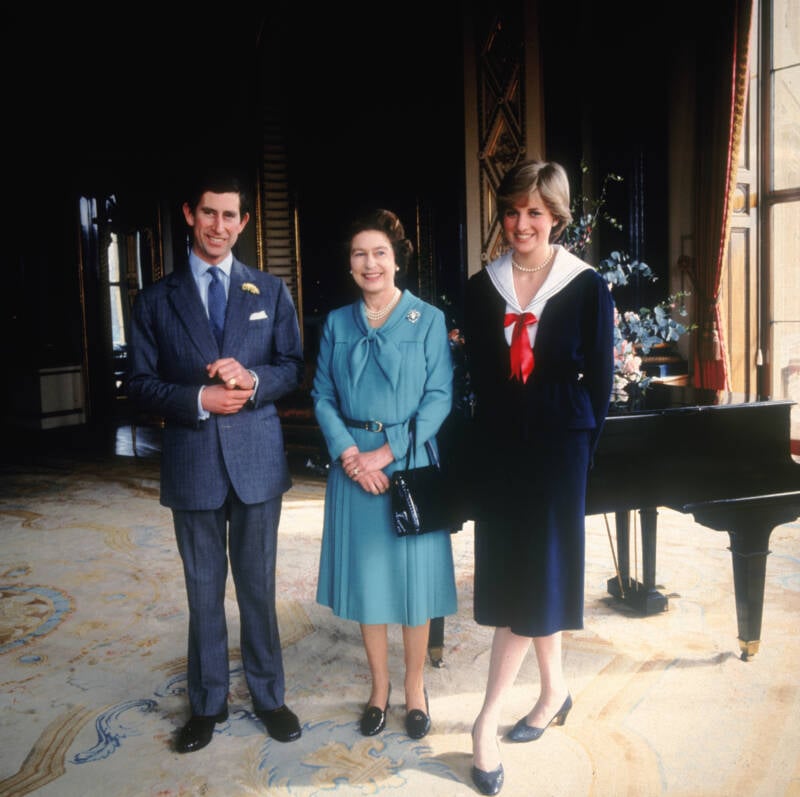
Fox Photos/Hulton Archive/Getty ImagesPrince Charles and his then-fiancée Lady Diana Spencer with Queen Elizabeth II at Buckingham Palace. 1981.
Princess Diana's youth, natural charm, and down-to-earth beauty quickly made her a media darling in the U.K., while her impeccable (and sometimes rebellious) style cemented her as an international fashion icon.
The new royal was also determined to forge her own path in the monarchy and to shirk off some of the more conservative historic traditions in favor of becoming a more accessible member of the British royal family.
During her wedding to Prince Charles, which was televised before 750 million people, she refused to promise to "obey" him in their vows. Throughout their marriage, Princess Diana had two sons with Prince Charles — William and Harry — and she resolved to give them as normal a childhood as possible. This included waiting in line to see Santa at the department store.
But in 1992, Charles and Diana publicly announced their separation in what many dubbed the "divorce of the century."
The royal separation rocked England to the core and shook up the Crown itself. In an interview with BBC in 1995, Princess Diana candidly revealed her personal struggles with depression and her life in the royal family, which made her all the more beloved by the public, though not by the Crown.
The divorce was finalized in 1996, but Buckingham Palace tried to deny it publicly. "All the details on these matters," the Palace announced, "remain to be discussed and settled. This will take time."
Despite severing her ties with the British Crown, Princess Diana remained a common sight across international tabloids. The press hounded her every move, hoping to capture pictures of Princess Diana with one of her rumored love interests. Unsurprisingly, she often clashed with the paparazzi.
Throughout this stressful time, one thing that kept her going was her devotion to her beloved sons. Another was her role as a philanthropist.
Her Numerous Philanthropic Endeavors
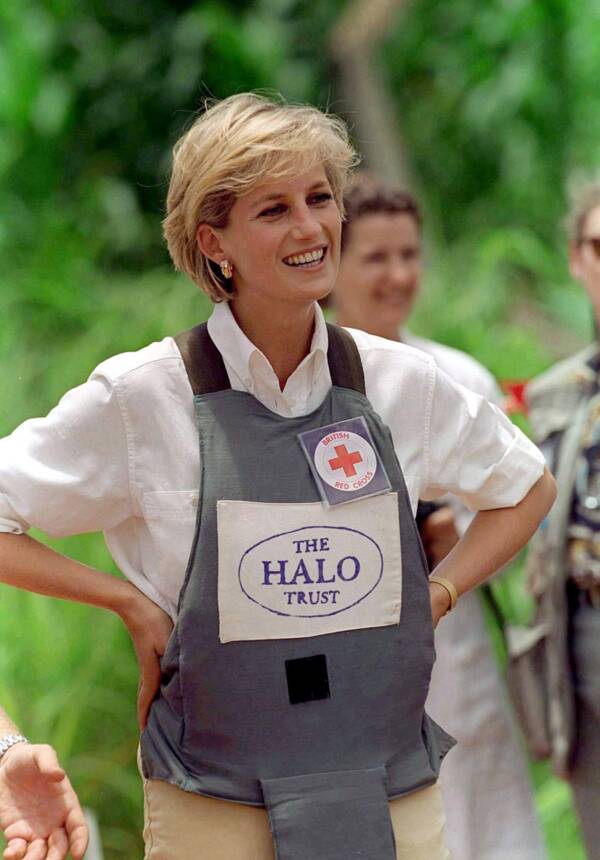
Tim Graham Photo Library via Getty ImagesDiana passed down her compassion to her sons, who now contribute to humanitarian efforts just like their mother.
Aside from her rocky marriage to Britain's future king and her troubles with the press, Lady Diana was also known for her humanitarian work.
As the Princess of Wales, Diana participated in several public appearances at hospitals and schools and became involved in numerous charities that focused on children, the elderly, homelessness, and addiction.
Princess Diana paid particularly close attention to those suffering from HIV/AIDS, cancer, and leprosy, many of whom fell outside the usual scope of royal concern. She also focused on landmine victims and refugees. In aiding these causes, she became a patron of several organizations, including the British Royal Cross and the Landmine Survivors Network.
She opened the Landmark Aids Centre in London in 1989, a controversial act at a time when many members of the public incorrectly believed that the disease could be transmitted through physical contact alone.
Diana famously hugged an AIDS patient while visiting an English hospital, and did the same when visiting a hospital treating people with leprosy in Indonesia the same year. Her decision to touch people afflicted with isolating diseases humanized them and helped to destigmatize these illnesses.
Perhaps one of Diana's most groundbreaking humanitarian acts was opening the very first HIV/AIDS unit in the U.K. in April 1987.
The media and public went into a frenzy when Princess Diana was seen shaking the hand of a man with AIDS without wearing gloves. This was a simple yet powerful gesture that challenged the stigma around patients who suffered from HIV/AIDS and went a long way in reducing the societal misconceptions about those who live with these conditions.
After her divorce from Prince Charles, Princess Diana resigned from her duties at more than 100 charities in order to focus her efforts more effectively on six. These included organizations like Centrepoint (a charity that provides support and accommodation to homeless youths in the U.K.), Leprosy Mission England, and the National AIDS Trust.
Eventually, Diana focused her efforts toward the issues of mental health, having struggled with depression and bulimia herself for many years.
The Tragic Death Of "The People's Princess"
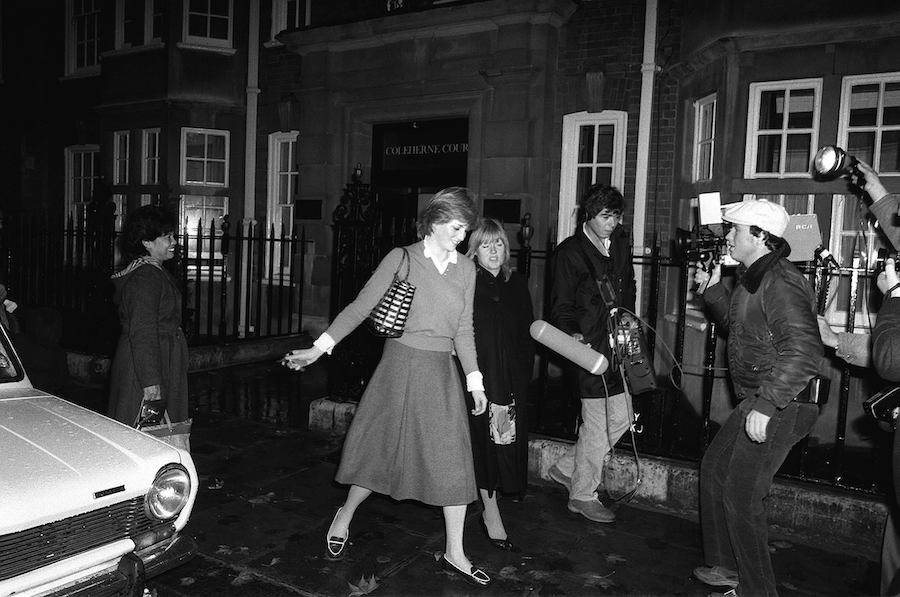
Alisdair Macdonald/Mirrorpix/Getty ImagesThe media was obsessed with taking pictures of Princess Diana up until the day she died.
Despite all of the admirable projects she was involved in, Princess Diana could never escape the watchful eye of the media. Sadly, the paparazzi's obsession with her eventually led to Princess Diana's death.
In 1997, she met Dodi Fayed, the son of Egyptian billionaire businessman Mohamed al-Fayed, who once owned the luxury department store Harrods. The pair were photographed enjoying a vacation on the French Riviera aboard Fayed's family yacht just weeks before both of them died.
On August 30, 1997, Diana and Fayed arrived in Paris fresh off of their trip to the French Riviera. That evening, they visited the private Imperial Suite at the Hôtel Ritz for dinner. Close to midnight, they snuck out of the hotel in order to avoid the paparazzi who were waiting out in the front of the building.
The couple then jumped into a Mercedes S-280 limousine. To further evade the paparazzi, they even sent a decoy limo to the front of the hotel.
Nonetheless, the photographers quickly caught sight of the Mercedes that was carrying the couple. Their driver, Henri Paul, soon sped up, apparently hoping to lose the motorcycles that were trailing them.

PIERRE BOUSSEL/AFP via Getty ImagesThe Mercedes that was carrying Princess Diana, after it crashed in Paris on August 31, 1997.
Tragically, the car collided with a concrete pillar in the Pont de l'Alma tunnel. The crash was so brutal that Fayed and Paul died instantly. But Princess Diana was still conscious when medics arrived. She reportedly mumbled, "Oh my God" and "Leave me alone" as she was rushed to the hospital.
But the injuries she sustained during the accident proved inoperable. At 4 a.m. on August 31, 1997, the princess was pronounced dead at age 36 — making her the third person to die from the crash. The only passenger in the car who survived the night was Fayed's bodyguard, Trevor Rees-Jones.
Both French and British authorities later investigated the cause of the car crash, and ultimately blamed the deceased Paul. His blood-alcohol level exceeded the legal limit and he had been driving double the speed limit.
In the days after Princess Diana's death, the beloved royal was publicly mourned by people from all over the world. Two billion people tuned in to watch Princess Diana's funeral and to grieve the loss of a woman who tried her best to stay true to herself in spite of the expectations thrown upon her.
Ultimately, Princess Diana is remembered as a woman who was determined to use her powerful platform to help people in need. It's little wonder why she's still revered as "the People's Princess" to this day.
After perusing these pictures of Princess Diana, check out these photos of the British royal family members being surprisingly normal. Then, take a look at the complicated lineage of the British royal family.
